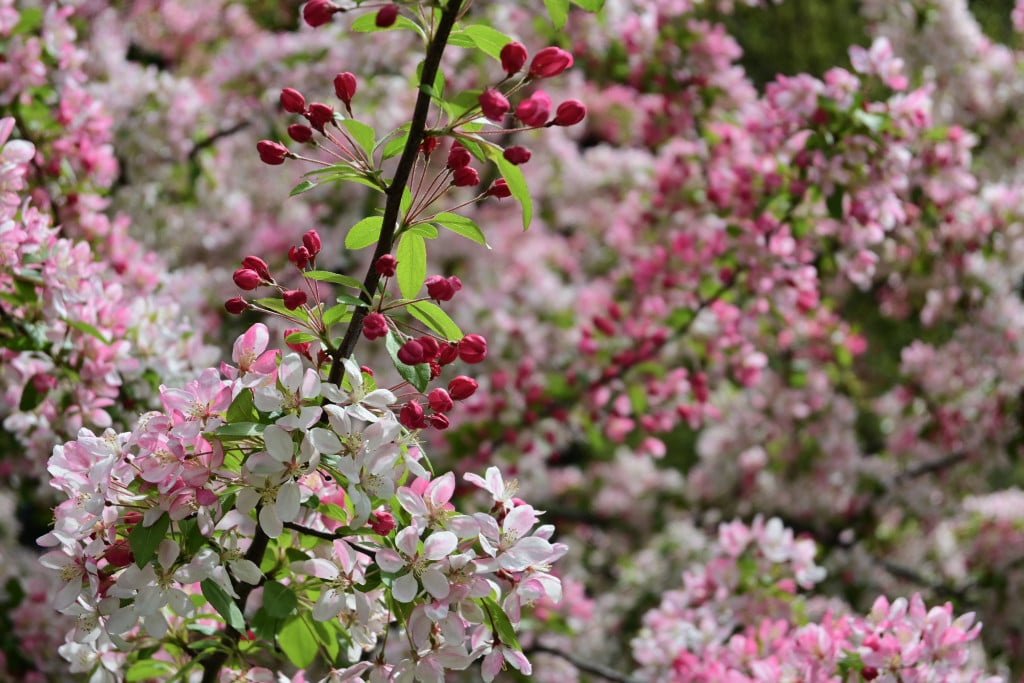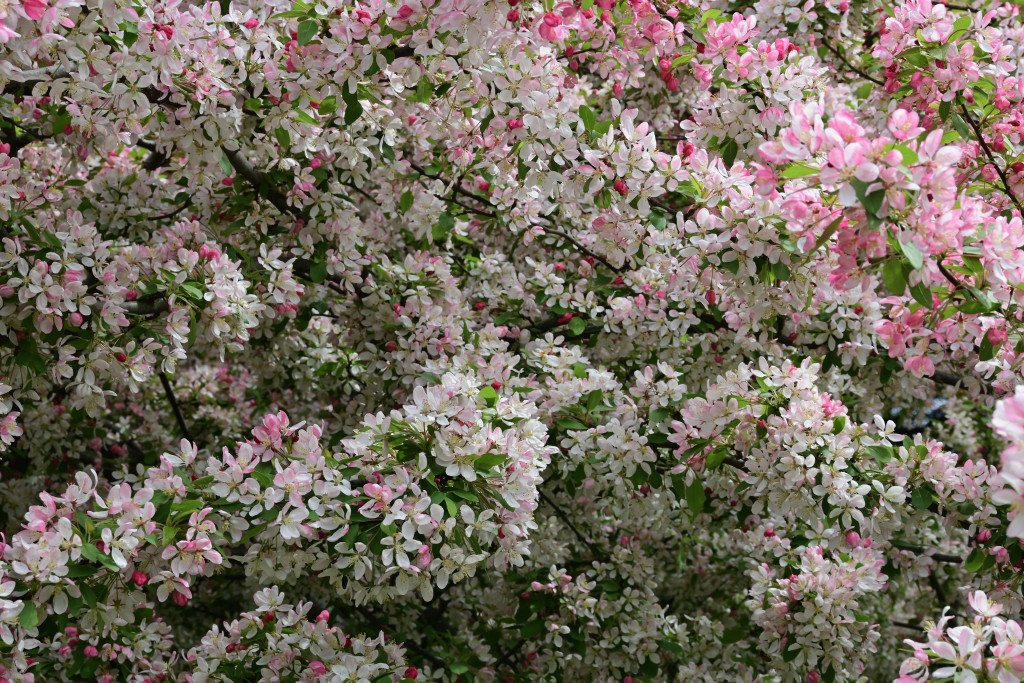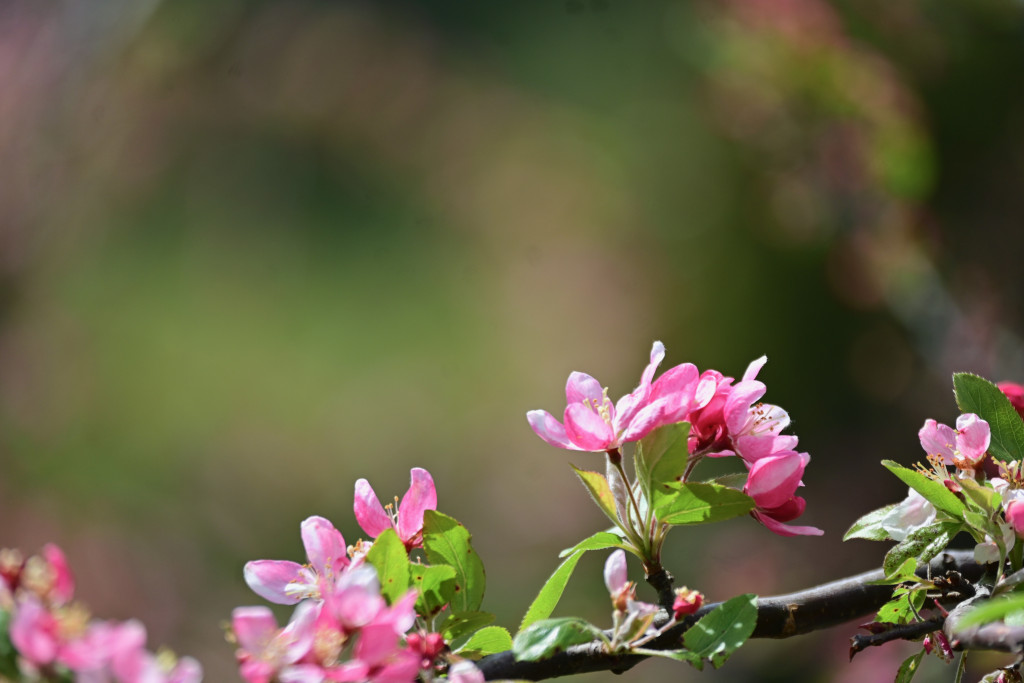One of my early loves, Malus floribunda made a huge impact (and the same specimen still does) on the main lawn at Ripponlea, where I did my gardening apprenticeship. I remember virtually burying myself in it, and looking closer and closer at the flowers, curious that a tree that, from a distance, read as a simple baby pink, could contain such variation when viewed close up, from near-white to deep red.
It was a great early lesson in looking closely, and intently, and not assuming that any plant or flower had given me everything on first glance. I need to learn that one again.

I also loved its unapologetic investment into a single explosive moment. Malus floribunda holds nothing back, and clearly sees no value in staggering flowering for the sake of floral longevity.
There’s a fine-featured elegance to every part of this small tree. The leaves are simple and refined, and the branches are slender and largely horizontally held, unlike many of the more muscular and angular crabs. Malus floribunda is very distinct shape, which to a large extent dictates its use. Wider than it is high, from quite a young age (it’s height eventually achieving up to 8m, but more commonly 4 or 5m), and clothed low to the ground with branches, it’s not an easy plant to integrate into garden beds. Not only is it tricky to find stuff that will happily grow in its shade and coexist with its root competition, it’s hard to get under to attend to anything you might find that is capable of growing there. So it nearly always ends up as a lawn specimen – a role in which it excels.

The only downside of this is that it’s nearly always planted as an individual. While a single plant can provide huge pleasure (as witnessed above), plants like this with huge floral punch for a single moment in the year can become so visually dominant at their climax as to steal the show entirely, invalidating everything else around. Where space permits it’s so much better to repeat plants around the garden in such a way that they echo around your field of vision. By doing so, the collective impact is amplified but the singular impact is diluted.

The single best example of this kind of repetition, in my opinion, is how Paul Bangay has used Malus floribunda at Stonefields, his home. It would have been so tempting to use a range of different crabs, but Paul has opted to invest in one big moment, and his garden is encircled with discrete clumps and clusters of Malus floribunda. The result is stupendous. Check out his instagram post of Nov 12, 21, if you need to see it with your own eyes.

Have you grown Malus floribunda? How have you managed to integrate it into your garden?
Hi Michael- I planted 6 of these beautiful trees in a semicircle 3 or 4 years ago, but wouldn’t you know, 2 are growing at half the rate of the others, spoiling the effect of enclosure I saw in my head.. gardening can be a frustratingly inexact science, makes it more of a creative exercise I guess..
It’s so irritating. Makes me very reluctant to ever plant anything that depends on even growth across many individuals
Hi Michael, I planted one a few years ago in our Sydney garden. The one I bought is grafted, which gives gives it some height and low clearance. I was really hoping it would umbrella over our patio. But, it’s very slow growing and I do question my choice often. It is beautiful and last year we even got very pretty little crabapples. My garden is an informal mixture of cottage style so it kind of works (I think).